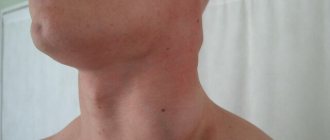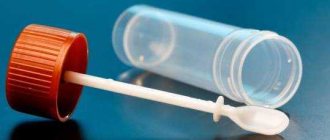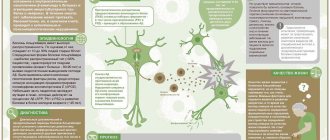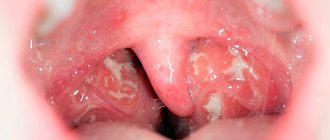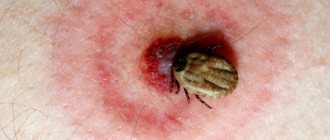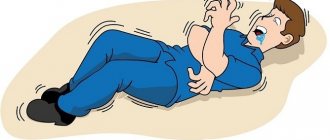Heartburn is a common symptom; its occurrence is usually associated with episodic causes, such as overeating. But regularly occurring heartburn can signal a dangerous condition - damage to the wall of the esophagus by acidic gastric juice, which is an aggressive environment.
GERD is a chronic condition that requires treatment throughout your life.
Causes of GERD
The esophagus and stomach are separated by a muscle sphincter, which in healthy people does not allow gastric contents to flow in the opposite direction. With gastroesophageal reflux disease, the sphincter works ineffectively, its tone is reduced.
Predisposition to the occurrence of the disease may be:
- stress;
- smoking;
- taking a number of medications.
The causes of GERD are:
- Insufficiency of the barrier function of the gastroesophageal junction.
- Decreased gastric evacuation function.
- Pregnancy and obesity, in which GERD is aggravated due to increased pressure in the abdominal cavity, insufficient saliva production and low content of bicarbonates in it.
- Low tone of the esophageal wall and impaired peristalsis.
- The presence of erosions and ulcers on the gastric mucosa.
- Negative effect of aggressive gastric and pancreatic enzymes on the esophageal mucosa.
GERD: what is it
In patients who suffer from gastroesophageal reflux, contents from the stomach regularly flow into the esophagus. Doctors distinguish two types of reflux:
- physiological;
- pathological.
How can you tell them apart? With physiological reflux, a similar reflux of food occurs after a person has eaten a heavy meal. At the same time, he no longer experiences any unpleasant sensations. That is, there is simply a spontaneous entry of stomach contents into the esophagus. However, this phenomenon is not systematic. Pathological reflux, on the contrary, occurs quite often, some time after eating and causes significant discomfort. It is often observed at night. But gastroesophageal disease is pathological reflux. We will take a detailed look at what gerb is, find out what causes it, what symptoms are used to diagnose it, and what methods are used to treat it.
Why is GERD dangerous?
Chronic inflammatory process in the wall of the esophagus (esophagitis), constant exposure to aggressive gastric juice can lead to the following complications:
- narrowing;
- cancer of the stomach or esophagus;
- ulcers of the esophagus, the consequence of which can be esophageal bleeding;
- Barrett's esophagus, in which the cellular composition of the mucous membrane changes, which can trigger the development of esophageal cancer;
- holding your breath.
Complications after GERD are life-threatening, so patients with an established diagnosis must be monitored at a dispensary and regularly see a doctor. It is better to prevent a disease than to treat its consequences.
Complications of GERD
Gastroesophageal reflux disease is usually not life-threatening. However, GERD can lead to complications such as:
- Esophagitis (inflammation of the esophagus)
- Esophageal bleeding or ulcer occurring with chronic or acute esophagitis
- Formation of scar tissue in the esophagus, which can narrow the esophagus and make swallowing difficult
- Tooth decay
- Sleep apnea
- Respiratory diseases and problems: cough, hoarseness, shortness of breath with asthma, chronic bronchitis, chronic laryngitis and pneumonia
- Barrett's esophagus (a rare disease that causes cancer of the esophagus)
- Esophageal cancer (an even rarer but life-threatening disease)
Symptoms and signs
The main symptoms of GERD are:
- heartburn;
- chest pain;
- signs of dysphagia.
Heartburn appears when the body is tilted forward and in a horizontal position. Retrosternal pain manifests itself as angina pectoris and can cause:
- in the left hand;
- in the lower jaw;
- in the supraclavicular region.
The association of pain with:
- eating;
- change in body position;
- preventing pain by taking antacids.
In addition to symptoms from the gastrointestinal tract, extraesophageal manifestations of the disease are also characteristic:
- Bronchopulmonary syndrome (severe cough, respiratory arrest at night, lung abscess, bronchiectasis).
- Otolaryngological syndrome (reflux stomach contents entering the respiratory tract can cause rhinitis, cancer and narrowing of the larynx, inflammation of the oropharynx, trachea, bronchi).
- Anemic syndrome against the background of bleeding from erosions and ulcers of the esophagus.
- Cardiac syndrome (chest pain, arrhythmia, angina, arterial hypertension).
- Dental syndrome (reflux of aggressive enzymes contributes to the appearance of carious teeth and damage to enamel).
Symptoms
The most striking symptom of the disease is heartburn. Depending on the stage of the disease, it can occur after eating, during physical activity or at rest, at night or during the day.
A characteristic symptom is that heartburn intensifies when lying on the right side, weakens when changing position. The severity of heartburn does not reflect the degree of damage to the mucous membrane.
Other signs indicate a severe course of the disease. Belching sour, with scar changes - eaten food - occurs along with heartburn. Associated with excessive stimulation of esophageal sphincter receptors. Severe, persistent heartburn leads to vomiting.
The appearance of heartburn and belching at night causes severe coughing, vomiting, and inability to sleep at night. The patient constantly wakes up and searches for a comfortable sleeping position.
Often, it is coughing and vomiting at night that becomes the reason for visiting a doctor - nothing bothers the patient during the day.
In some cases, heartburn with GERD is felt as pain on the left side of the chest, simulating angina pain (cardialgic form).
The pain is accompanied by a drop in blood pressure, palpitations, cold sweat, and fear of death. There are no changes on the ECG characteristic of angina pectoris.
Diagnostic methods
Diagnosis of GERD is not very difficult and can be carried out even in a small hospital. For diagnosis the following is carried out:
- esophagogastroduodenoscopy;
- 24-hour pH measurement;
- fluoroscopy;
- gastroscopy;
- general clinical blood tests.
Fibrogastroduodenoscopy is performed repeatedly for:
- clarification of the diagnosis;
- monitoring the effectiveness of therapy;
- dynamic observation.
Using a gastroscopic or endoscope inserted through the mouth, the following problems in the esophagus can be seen:
- signs of inflammation;
- narrowing;
- the presence of ulcers on the mucous membrane.
In this case, pieces of tissue are taken from the affected areas of the mucosa (biopsy) to reliably establish a diagnosis. This method can also treat esophageal bleeding by cauterizing bleeding vessels on the mucous membrane.
24-hour pH-metry allows you to determine the acidity in the esophagus during the day. The study is carried out using a probe, at the top of which there is a sensor that measures the pH level in the esophagus. The result is recorded on a special block that the patient carries with him at all times.
During the study:
- the person leads a normal life;
- notes on the block symptoms and events occurring during the day.
After 24 hours, the result is processed by a computer, after which a conclusion is issued.
A diagnostically significant indicator of the disease is a pH below 4 (the norm is 6-7), and this level lasts more than 5 minutes.
Photo: Gastroesophageal reflux disease (GERD) - pH-metry
Intraesophageal manometry can determine the pressure in the lower sphincter. Normally it ranges from 10 to 30 mm. Hg Art. With GERD this figure is below 10.
X-ray examination of the gastric esophagus determines the presence of:
- hiatal hernia;
- narrowing.
Causes
The causes of reflux are as follows:
- Increased intra-abdominal pressure. This manifestation occurs in the presence of overweight or obesity, flatulence or constipation, and the occurrence of ascites (fluid accumulation in the peritoneum). It should be borne in mind that pregnancy also leads to an increase in intra-abdominal pressure.
- Diaphragmatic hernia. With hiatal hernia (hiatal hernia), organs from the peritoneum are displaced into the chest area. This pathology occurs quite often in people over 50 years of age.
- Decreased clearance (an indicator indicating the rate of tissue cleansing) of the esophagus. May develop due to a decrease in the neutralizing effect of saliva.
- Insufficiency of the gastric cardia. This pathology occurs due to incomplete closure of the valve.
- Frequent consumption of caffeinated drinks. This is not only coffee, but also tea or Coca-Cola.
- Drinking large quantities of alcohol-containing drinks.
- Taking certain medications. Among them are Verapamil (used for cardiac disorders), Papaverine (widely used for muscle spasms), Theophylline (prescribed for asthma or peptic ulcers).
- Duodenal ulcer.
- Frequent stress and nervous tension.
GERD is also diagnosed during pregnancy. During this period, due to the growth of the uterus, intra-abdominal pressure increases, which contributes to the occurrence of reverse reflux of food.
It should be remembered that determining the etiology of GERD is a rather difficult process. It is quite difficult for an ignorant person to clarify the mechanism of the origin of pathology - its pathogenesis.
The development of the disease is also influenced by habits that are associated with food consumption. The nature of nutrition is also important. Rapid absorption of food in large quantities leads to excessive swallowing of air. Because of this, intragastric pressure increases, the lower sphincter relaxes and reverse reflux of food occurs. Constant consumption of fatty, fried meat and flour products, flavored with plenty of seasonings, leads to slow digestion of the food coma. Rotting processes develop, which leads to an increase in intra-abdominal pressure.
Treatment of the disease
Patients with GERD can receive care in a clinic setting, and if complications occur or a severe form of the disease occurs, treatment is carried out in a gastroenterological or surgical department. Most people can cope with the disease on their own:
- by changing lifestyle;
- dietary nutrition.
But some people need medication or surgery to relieve symptoms. For conservative therapy, the following groups of drugs are used:
- H2-histamine receptor blockers (ranitidine);
- proton pump blockers (Pantoprozol);
- prokinetics (Domperidone);
- antacids (Almagel);
- gastrocytoprotectors (Sucralfate, De-nol).
Therapy lasts from 2 to 4 months. If symptoms return, treatment for the disease is prescribed for life.
If conservative treatment of GERD in adults has no effect or complications arise, proceed to surgical treatment. The main operation is a Nissen fundoplication, which involves wrapping and suturing the fundus of the stomach around the esophagus to prevent reflux.
Complications
Don't underestimate the dangers of GERD. If this disease is ignored, it can lead to dangerous complications. Among them, one of the most common is esophageal stricture, Barrett's esophagus, the development of ulcers and erosions, as well as bleeding from them.
Barrett's esophagus is the most dangerous complication. With this development of the course of the disease, the squamous cell epithelium in the esophagus is replaced by a cylindrical one (it is characteristic of the stomach). With such substitution, the risk of developing cancer increases tenfold.
Diet for gastroesophageal reflux disease
Allowed
If you have GERD, it is important to follow a diet. Meals should be:
- fractional;
- frequent;
- in small portions.
There should be at least 2 hours between meals and bedtime.
Forbidden
- carbonated drinks;
- eating very cold or very hot food.
Excluded from the diet:
- citrus;
- baking;
- fresh black and white bread;
- strong brewed tea;
- spicy, fatty, fried foods.
The following types of diets may be considered:
- table No. 1;
- table No. 2;
- table number 4.
Treatment with folk remedies
Together with drug treatment, you can turn to traditional medicine. Medicinal herbs help normalize acidity in the stomach and prevent inflammation of the esophagus.
- Plantain leaves give a positive result. To do this, you need to take six tablespoons of dry plantain leaves, one tablespoon of chamomile and four tablespoons of St. John's wort. They need to be filled with one liter of hot water and brought to a boil. After about thirty minutes, the broth is filtered and taken one tablespoon three times a day;
- Vegetable juice will help maintain strength and normalize digestion. To do this, finely chop carrots, tomatoes, radish leaves and cucumber. The ingredients need to be crushed using a blender, after adding a little salt and pepper. Take a glass daily;
- A decoction of chamomile, mint and wormwood effectively helps with heartburn and belching. They need to be taken in equal proportions and filled with hot water. In twenty minutes the tea will be ready; before drinking, you can add honey or a slice of lemon.
In folk medicine, there are a large number of recipes that effectively help in the treatment of GERD. But before taking decoctions, you should consult your doctor.
Prevention
The presence of GERD in a person can cause the development of serious complications and significantly affect the quality of life, so it is important to carry out prevention and adhere to the following recommendations:
- Avoid excessive physical activity, which can increase abdominal pressure.
- Stop drinking alcohol and smoking.
- Normalize body weight.
- Follow a diet.
Limit the use of certain drugs that worsen gastroesophageal reflux disease:
- m-anticholinergics (atropine);
- antispasmodics (papaverine);
- calcium antagonists (amlodipine).
Project consultant, co-author of the article: Ovchinnikova Natalya Ivanovna | Gastroenterologist, Hepatologist, Infectious disease specialist 30 years of experience / Doctor of the highest category, Candidate of Medical Sciences
Education:
Diploma in General Medicine, Novosibirsk State Medical Institute (1988), Residency in Gastroenterology, Russian Medical Academy of Postgraduate Education (1997)
Diagnostics
Basic diagnostic techniques:
- daily pH monitoring of the lower third of the esophagus;
- X-ray examination of the esophagus with a contrast agent;
- endoscopic examination of the esophagus (EGDS);
- scintigraphy of the esophagus with radioactive technetium;
- multichannel intracavitary impedanceometry of the esophagus;
- manometric examination of the esophageal sphincters.
Esophageal endoscopy for the diagnosis of gastroesophageal reflux disease
Additional research methods:
- bilimetrics;
- Bernstein test;
- chromoendoscopy;
- standard acid reflux test;
- study of esophageal clearance;
- probing using methylene blue;
- study of proteolytic intraesophageal activity;
- performing pulmonary function tests after intraesophageal perfusion of hydrochloric acid.
GERD occurs in all age groups, in both sexes, including children; the incidence increases with age.
Classifications
In the medical field, several classifications are used to establish the correct diagnosis. One of the most common is the so-called Los Angeles, which has a letter designation of the degree of damage to the esophageal mucosa:
- degree A - characterized by the appearance of a small number of lesions, which in type may resemble erosion. Their volumes do not exceed five millimeters;
- degree B - the number of lesions does not increase, but only their size increases - more than five mm;
- degree B – damage to two or more folds is observed, but the affected area is no more than 75% of the lining of the esophagus;
- grade D is the most severe. The spread of the inflammatory process is observed throughout almost the entire mucosal area.
Los Angeles classification
In addition to the Los Angeles classification, there are several other divisions of esophagitis that are not used with such frequency in medicine. The first of them provides for the identification of several stages of the internal course of the disease:
- initial - endoscopic diagnosis reveals swelling and slight pathological redness of the esophageal mucosa;
- medium - the formation of a superficial or linear erosive lesion occurs with the formation of small defects;
- moderate severity - during examination of the patient, strong and deep erosive lesions are found, having a round shape;
- severe – characterized by the presence of pronounced erosions and ulcers that greatly affect a person’s life.
Another classification divides the disease into stages such as:
- the first stage is based on the detection of single, non-merging foci of erosion;
- second stage - erosions unite with each other, but do not affect a large area of the mucous membrane;
- third stage - changes in the structure of the lining of the esophagus extend to almost the entire surface of the lower esophagus;
- the fourth stage is characterized by the presence of pronounced ulcerative neoplasms. This degree is considered a precancerous condition.
In addition, other endoscopic classifications, in addition to the Los Angeles one, include divisions of esophagitis, which are named after the scientists who defined them. The course of such a disease according to Grigoriev :
- initial degree - several superficial focal erosions are expressed, while the integrity of the mucous membrane is not compromised, but a disappearance of its shine is observed;
- medium - the formation of several superficial erosions, often linear in shape, which occupy a small area of the lining of the esophagus;
- moderate - there is a combination of erosions and the spread of the pathological process to almost half the surface of the mucosa;
- severe - a similar process is observed as in the previous stage, but the depth of erosion is more than five millimeters;
- complicated - during the examination, not only deep erosions are observed, but also ulcers, strictures and fibrosis of the walls of this organ.
Classification according to Okorokov :
- first degree – swelling, redness and secretion of a large amount of mucus;
- the second is the formation of single erosions;
- third - numerous erosions and slight bleeding are observed;
- fourth – the spread of the pathological process throughout all parts of the esophagus and the appearance of plaque in the form of viscous mucus.
Symptoms of GERD
Such disorders often cause complications in the form of chemical and enzymatic burns, erosions, peptic ulcers, Barrett's esophagus, and cancer.
Signs of the disease are symptoms that are divided into two categories: esophageal and extraesophageal. The first type includes manifestations such as heartburn, accompanied by a burning sensation, belching, and a bitter or sour taste in the mouth. Less common are nausea and heaviness in the stomach, pain after swallowing food (odynophagia). The second category includes such painful manifestations as recurrent bronchitis and pneumonia (bronchopulmonary), inflammation of the larynx and pharynx of a chronic nature (otolaryngological), caries (dental), heart pain (cardiac), types of autonomic disorders (neurological), changes in blood composition (anemic).
ADDITIONAL INFORMATION! Gastroesophageal reflux, or GER for short, is not always a pathology. In many cases, heartburn occurs in healthy people.
If a symptom appears rarely and goes away quickly, then you don’t have to worry, since it is considered a physical norm.
Homeopathy for reflux esophagitis
Not everyone with GERD is suitable for synthetic medications, so treatment with complex homeopathy is prescribed. Advantages:
- normalization of the work of the National Assembly;
- stabilization of gastrointestinal motility;
- cytoprotective effect;
- protection of the esophageal mucosa from acid reflux;
- relief of extraesophageal symptoms of the disease;
- minimum side effects.
The new generation homeopathic medicine “Gastro-gran” is endowed with these properties. The medicine has a number of advantages:
- fights inflammation;
- choleretic;
- envelops;
- relieves pain and spasm;
- disinfects;
- accelerates regeneration.
Additional remedy:
- improves the condition of the liver, pancreas, and intestines;
- improves blood microcirculation;
- regulates the functioning of the autonomic nervous system;
- has a soft, calming effect;
- does not provoke side effects.
Treatment of GERD
As with any chronic disease, when GERD is detected, it is important to adjust your lifestyle. Otherwise, it will not be possible to cure reflux with medications, and the time intervals between exacerbations will be short.
- Avoid possible increases in intra-abdominal pressure - heavy lifting, tight belts, girdles and corsets.
- Sleep on a high headboard.
- Avoid overeating, especially in the evening. The latest meal should be 3 hours before bedtime.
- After eating, do not lie down or bend over. Try to stay upright and don't slouch. Short walks of 30 minutes are ideal.
- Follow a GERD diet. Avoid fatty foods (whole milk, cream, pork, duck, lamb). Avoid caffeinated and carbonated drinks. Don't drink alcohol. Reduce the amount of citrus fruits, tomatoes, onions, garlic and fried foods on the menu. Do not overuse legumes, white cabbage and black bread - they increase gas formation.
- Discuss with your doctor all the medications you take regularly.
- Stop smoking.
- Control your body weight.
In addition to these measures, the doctor will tell you how to treat the disease with medications. They will help to establish the passage of food in the gastrointestinal tract from top to bottom, reduce the content of hydrochloric acid in gastric juice, and accelerate the healing of existing defects. In uncomplicated cases, surgical treatment is usually not required.
Classification of GERD
There are several options for classifying GERD; different medical institutions may have different preferences and traditions. The following criteria are used to indicate the stage of GERD:
- presence or absence of esophagitis;
- the degree of severity of morphological changes (for this a biopsy is performed);
- degree of severity of motor dysfunction;
- presence or absence of extrapulmonary manifestations;
- the presence or absence of complications of GERD.
A clear identification of the stage of the disease is necessary to draw up an individual plan for examination and treatment.
Kinds
In addition to the Los Angeles and other endoscopic classifications, there are several types of esophagitis, each of which has its own characteristics of course and treatment.
Peptic esophagitis
The first of these is peptic esophagitis , which is also called reflux esophagitis . This is due to the constant backflow of stomach contents into the esophagus. Often the causes of this disorder are poor nutrition, excessively high body weight, leading an unhealthy lifestyle, wearing very tight clothing that tightens the anterior wall of the abdominal cavity.
Peptic esophagitis has its own classification, depending on the degree of damage to the mucous membrane, which is similar to the Los Angeles one. The disease can lead to some complications, the most serious of which is Barrett's disease - a structural change in mucosal tissue. Treatment consists of taking medications and following a diet. Surgical intervention is extremely rare.
The main symptoms of peptic esophagitis and some other types of the disease are - impaired passage of solid and liquid food, a feeling of pain when swallowing, constant heartburn, sore throat, which causes cough, nausea and pain in the chest, as well as belching with an unpleasant sour smell of recently eaten dishes.
Symptoms of peptic esophagitis
Eosinophilic esophagitis
Eosinophilic esophagitis is a disease that is often common among school-age children and people under thirty years of age. This disorder is characterized by isolated severity of infiltration of the esophagus.
The factors in the formation and manifestation of symptoms of eosinophilic esophagitis are practically no different from other types of the disease. Treatment is based on diet therapy and medication.
Fungal or candidal esophagitis
Fungal esophagitis in medicine has a second name - candidiasis . It differs in that the inflammatory process on the esophageal mucosa is provoked by the action of a pathological microorganism. But there are several predisposing factors to the occurrence of a fungal type of disease:
- taking antibiotics for a long time;
- thermal or mechanical injuries of the esophagus;
- diabetes;
- individual allergic reactions to food;
- abuse of bad habits;
- following a strict diet or fasting;
- cancerous tumors.
Candidal esophagitis
Treatment for this type of illness is quite long and includes the prescription of medications, proper nutrition and traditional medicine.
Fibrous esophagitis
Fibrous esophagitis is often formed against the background of scarlet fever or diphtheria. It is characterized by the formation of fibrous exudate - a film, grayish in color, on top of the mucosa, but it is quite easy to remove, since it is not attached to the tissues of the esophagus. There are no characteristic symptoms of this type of disorder. The symptoms are in many ways similar to the course of peptic esophagitis.
Treatment of this form consists of taking a course of antibiotics, which, if ineffective, requires medical intervention. Untimely therapy can lead to several complications, including ulcerative lesions of the mucous membrane, stenosis, narrowing of the lumen of the esophagus and Barrett's syndrome.
Ulcerative esophagitis
Ulcerative esophagitis is formed against the background of thermal or chemical burns of the lining of the esophagus. This type of disease has its own classification depending on the degree of damage and spread of the inflammatory process, which corresponds to the Los Angeles classification. There are several reasons for this disorder:
- the presence of concomitant bacterial or viral infections;
- damage to the integrity of the mucous membrane during medical procedures;
- uncontrolled use of anti-inflammatory drugs;
- accidental penetration of chemicals into the body;
- abuse of alcohol and spicy foods.
Ulcerative esophagitis
Treatment for this disease consists of taking medications and diet therapy.
Atrophic esophagitis
Atrophic esophagitis - characterized by the fusion of foci of erosion and damage to almost the entire surface of the mucosa. But this type of disease is preceded by subatrophic esophagitis, in which normal tissues of the lining of the esophagus slowly degenerate into pathological ones that cannot function normally. Subatrophic and atrophic forms can have different courses, but they all have the common name Barrett's syndrome. There are several reasons for the occurrence of this form of pathology:
- thermal or chemical burns of the mucous membrane;
- excessive addiction to alcoholic beverages;
- a history of diabetes mellitus;
- various pathological conditions of the gastrointestinal tract.
The subatrophic type occurs against the background of:
- autoimmune diseases, during which the body perceives its own cells as foreign and attacks them;
- influence of the bacterium Helicobacter pylori.
The main symptoms of this type of disease, in addition to the main ones, are the occurrence of an unpleasant odor in the mouth, an aversion to dairy products, increased gas production and diarrhea.
The latter form is easily eliminated with drug treatment, while the atrophic form is an irreversible process. In addition, the consequences of the disease often develop, the most severe of which is Barrett's esophagus.
Superficial nonerosive esophagitis
Superficial non-erosive esophagitis is a disease that belongs to concomitant disorders and can develop against the background of various burns of the esophagus, as a result of acute infectious diseases, an allergic reaction to a particular food product, indiscriminate use of certain medications and alcoholic beverages, acute nervous shock, the presence of neoplasms of various nature. This type of esophagitis does not require serious treatment, you just need to adhere to proper nutrition and take medications to eliminate the symptoms.
Radiation esophagitis
Radiation esophagitis – develops as a result of radiation therapy for oncological tumors. The severity of the course depends on the increase in the radiation dose, as well as on the combination of such treatment with the use of certain drugs. The disease is expressed by similar symptoms as eosinophilic esophagitis or any other type. Signs may occur for several months after radiation therapy is completed. Eliminating the disease consists of taking medications, following a diet and ensuring complete rest. Surgical intervention is resorted to when other methods of therapy are ineffective.
Hemorrhagic esophagitis
Hemorrhagic esophagitis is a consequence of a severe infectious process in the body. This disease is characterized by the presence of small cell bleeding in the mucous and submucous membrane of the esophagus. In addition to the characteristic signs of esophagitis, with this disease, impurities of blood and mucus are observed in the vomit.
Elimination of the disease consists of prescribing antibiotics and following a diet. In severe cases, medical intervention is necessary to open and drain the suppuration.
How to cure?
There is no specific treatment for GERD. The therapeutic measures taken are aimed at eliminating pathological symptoms, preventing relapses and the development of complications. In the initial stages of GERD, therapeutic exercises give good results. Initially, the disease is treated with medication, relieving severe symptoms. But at the same time, weakness of the esophageal sphincter remains.
Exercise therapy exercises are aimed specifically at strengthening the muscles of the esophagus and diaphragm, which prevents pathological reflux and improves a person’s overall well-being. In accordance with generally accepted practice in gastroenterology, the patient is prescribed antisecretory drugs: proton pump inhibitors and H2-histamine receptor blockers. Additionally, the patient may be prescribed prokinetics - recommended for the development of bile reflux, antacids, reparants - medications that promote the healing of damaged mucous membranes of the esophagus.
H2-histamine receptor blockers
Medicines in this group help reduce the amount of hydrochloric acid produced. To exclude recurrence of the pathology, they are prescribed as a course of treatment. The patient may be prescribed:
- Famotidine. Reduces the activity of pepsin, reduces the amount of hydrochloric acid produced.
- Cimetidine. The dosage and regimen are selected individually. The drug can cause nausea and dyspeptic symptoms.
- Nizatidine. Reduces the amount of hydrochloric acid produced.
Proton pump inhibitors
While taking medications, the level of hydrochloric acid produced decreases. Esomeprazole, Omeprozole, Pantoprozole, Rabeprozole, Lansoprozole are prescribed for use. The choice of remedy depends on the recommendations of the attending physician. For example, pregnant women are prohibited from treatment with Omeprazole. It is replaced with Panto- or Lansoprozole.
Prokinetics
The drugs help to increase the tone and contraction of the lower esophageal sphincter, which reduces the number of pathological reflux of gastric contents. Treatment of gastroesophageal reflux disease is carried out using the following prokinetics:
- Domperidone is an antiemetic. While taking it, the development of gastrointestinal disorders cannot be ruled out.
- Metoclopramide. Improves motor activity of the esophagus. Has many side effects.
- Cisapride. It has a stimulating effect on motility and tone of the gastrointestinal tract, and has a laxative effect.
Antacids
This group of drugs reduces the acidity of gastric juice. Appointments may include:
- Phosphalugel. It has absorbent, enveloping and antacid properties.
- Gaviscon. Forms a protective film on the surface of the mucous membrane of the esophagus and stomach.
- Rennie. Neutralizes the acidity of gastric juice.
When bile is blocked, drugs from the group of prokinetics are used, most often Domperidone or Ursofalk. The medicine is included in the category of hepatoprotectors. It helps dissolve gallstones and reduces blood cholesterol levels.
Surgery
The main indication for surgical treatment is the ineffectiveness of previously selected drug therapy. During the procedure, the sphincter tone is restored, which eliminates the development of pathological reflux. Indications for surgical intervention include Barrett's esophagus, peptic ulcer of the esophagus, grade 3–4 esophagitis, and pathological narrowing of the esophagus.
Diet
Effective treatment of gastroesophageal reflux is impossible without following the principles of dietary nutrition. The recommendations are quite simple. It is necessary to avoid overeating and take a short walk after eating. Dinner should take place 4 hours before going to bed.
The following are prohibited:
- fruit juices;
- dishes with a spicy taste;
- chocolate;
- citrus;
- radish;
- coffee;
- alcoholic drinks;
- fried foods;
- bakery.
The menu of a patient with GERD should include low-fat kefir, milk, cream, low-fat fish, steamed, soups prepared with vegetable infusions, and sweet-tasting fruits. Alkaline mineral waters, tea with added milk, homemade crackers, yesterday's bread, butter, cereals - buckwheat, semolina and rice, watermelon - will be useful. Following a diet reduces the risk of developing reflux. You can read more about dietary nutrition for GERD in this article.
Can GERD be completely cured? No, but it is quite possible to achieve a long period of remission and practically forget about the disease.
Antacids and alginates
Objectives of medications:
- acid neutralization;
- pepsin inactivation;
- adsorption of bile acids, lysolycetin;
- stimulation of the production of bicarbonates in protective mucus;
- cytoprotective effect;
- stimulation of esophageal self-cleaning with alkalization of the stomach;
- increased contractility of the lower cardia during the transition from the esophagus to the stomach.
For GERD, liquid forms of antacids are recommended, which can be of the following subtypes:
- non-systemic drugs synthesized on the basis of non-absorbable aluminum and magnesium: Maalox, Phosphalugel, Gastal, Rennie;
- effective drugs with ingredients that relieve flatulence and bloating: “Protab”, “Daigin”, “Gestid”.
The best of the best:
- "Maalox." Advantages: variety of pharmaceutical forms;
- the highest acid-neutralizing property;
- providing a cytoprotective effect by binding bile acids with cytotoxins and lysolecithin;
- the ability to initiate the production of prostaglandins and glycoproteins;
- an increase in the amount of bicarbonates and mucus produced;
- minimum side effects;
- pleasant aftertaste.
- III generation antacid alginates: Topalkan, Gaviscon. They are synthesized on the basis of a colloidal suspension and alginic acid, which: form a protective film over the surface of the gastric contents;
- absorb acidity;
- protect the esophagus from the adverse effects of acid reflux.
Take after a meal and before going to bed.
